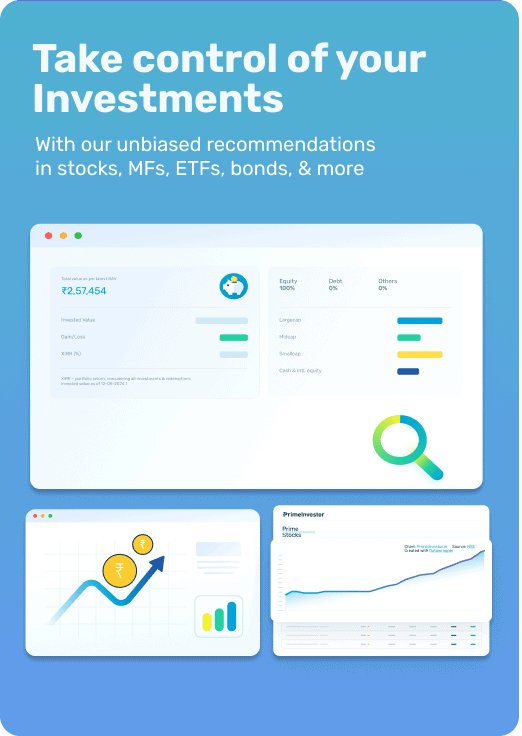The winding up of Franklin Templeton’s debt schemes has proved how credit risk and liquidity risk can be a lethal combination.
While the funds’ closures are an extreme event, this may be a good opportunity for you to take a relook at your portfolio – without panic, that is. The current debt market scenario is already tilted against credit as corporate credit quality comes under stress owing to the lockdown and pandemic. The Franklin issues adds to the pressure. So if you hold a fund that’s already scoring low on performance and holds credit risk, it’s best to take stock.
To guide you in this exercise, we have analysed debt fund and hybrid categories where credit risks can be masked, and listed out funds with high credit risk. We have used different cut-offs for defining high credit risk, based on the objective and timeframe of that category. We have also looked at the nature of papers and concentration to issuers.
Please note that SEBI’s category definitions do not specify credit-rating allocations other than the corporate bond and credit risk categories. Hence, the need for us to provide you with some internal risk cut offs for each category.
What we have not covered: In this exercise, we have not covered overnight, liquid, corporate bond, banking &PSU and gilt-oriented categories. Their portfolio make up does not warrant it. Redemption pressure may be a threat to some of these but we have no way of identifying whether the funds are adequately prepared for it. We have not covered credit risk category as well, because risk is the very nature of that category.
Please read the section on ‘What should you do’ at the end of the article carefully before taking any action.
What is credit risk, really?
Credit risk is the risk of the instruments that a fund holds, either not servicing the interest regularly or defaulting on principal or both. When the financials of a company which has issued a paper point to healthy business and cash flow metrics, the paper enjoys a high rating. When this deteriorates there are downgrades, which causes NAV erosion in a fund. In general, and per SEBI’s definition, funds with AA+ rating or more are typically sound in credit quality.
There is another risk which is often (not always) higher in low-quality papers. This is liquidity risk – that is, the risk that the debt paper cannot be sold quickly to other parties if there is a need to exit the paper. Such exiting will be hard or will involve having to sell on losses. The first risk (inherent in the 6 Franklin funds that wound up) coupled with the second risk has spelt downfall for the Franklin debt funds.
Why do funds opt for credit risk? Because low-rated papers deliver higher return for higher risk. If the risk transpires, a fund house can lose the money it lent (and you in turn take a NAV hit). If the risk delivers rewards, the paper gets rated higher as it steadily proves its ability to service debt. When fund houses go for these papers, they try to capture such mispriced opportunities – that is the probability of a paper improving in rating, in time. Higher coupon in early days and price appreciation later, if the paper’s credit quality improves are typically the 2 benefits. This is what Franklin did with its six funds, enjoying success for a good measure of time. Until their collapse, the Franklin funds were among the highest-returning funds and even delivered higher than equity markets in some periods.
Debt funds – Ultra-short, low duration, floater, money market
We’ve clubbed these categories together as they all serve the same timeframe, of 6 months to 2 years.
Our credit risk definition: Holding 10% or more in papers rated below AA+. We have defined this strict level because of the short holding period and the current debt market scenario that can take time to resolve.
The list of funds that had risky portfolios is tabled below. Note that several of them already have a low Prime Rating.
| Fund name | Fund category | Prime Rating | % held in papers below AA+ (Mar’20) | Mar ’20 AUM (Rs crore) |
|---|---|---|---|---|
| Baroda Treasury Advantage | Low Duration | Unrated | 58.0 | 55 |
| Franklin India Floating Rate | Floater | Unrated | 19.4 | 407 |
| HDFC Low Duration | Low Duration | 2.5 | 14.4 | 12,965 |
| ICICI Prudential Floating Interest | Floater | 2.0 | 28.3 | 6,645 |
| ICICI Prudential Ultra Short Term | Ultra Short Duration | 2.0 | 59.2 | 6,155 |
| IDBI Ultra Short Term | Ultra Short Duration | Unrated | 27.3 | 119 |
| Kotak Low Duration | Low Duration | 2.5 | 32.7 | 5,760 |
| L&T Low Duration | Low Duration | 1.5 | 30.5 | 792 |
| Nippon India Low Duration | Low Duration | 2.5 | 18.8 | 3,268 |
| Nippon India Ultra Short Duration | Ultra Short Duration | 1.0 | 69.8 | 1,012 |
| UTI Ultra Short Term | Ultra Short Duration | 1.5 | 15.5 | 1,659 |
Some observations on the funds listed above:
- Some of these funds were already poor on performance metrics; it is not just the credit risk that causes their low rating.
- Nippon India Ultra Short has close to 20% of its portfolio in papers maturing in 2023 and 2024, half of which is rated below AA+. While there may be liquidity, such long-term papers in a very short-term fund is not prudent.
- While some funds like ICICI Pru Ultra Short have diffused holdings and therefore have no concentration risk, the total credit exposure is high enough to warrant caution.
Debt – Short duration
In the short duration space, our time frame for funds is 1.5-3 years, and therefore we continue to be strict in credit exposures.
Our credit risk definition: Holding 15% or more in papers rated below AA+.
The list of funds that had risky portfolios is tabled below.
| Fund name | Fund category | Prime Rating | % held in papers below AA+ (Mar ’20) | Mar ’20 AUM (Rs crore) |
|---|---|---|---|---|
| IDBI Short Term Bond Fund | Short Duration | Unrated | 54.9 | 25 |
| Baroda Short Term Bond Fund | Short Duration | 3.0 | 30.3 | 280 |
| HSBC Short Duration Fund | Short Duration | 1.0 | 24.5 | 325 |
| BOI AXA Short Term Income | Short Duration | Unrated | 17.2 | 41 |
| Aditya Birla Sun Life Short Term | Short Duration | 2.5 | 16.9 | 2,860 |
The following points need to be noted.
- While not all papers below AA+ is of poor quality, you have to draw the credit limit line conservatively as the time frame does not give you leeway to recover from any risk events.
- You need to keep track of AUM of your fund. You can see some of the funds below will very low AUM. This makes them riskier as explained in earlier categories.
- Risks for some of them stem from high exposure to single instrument. For example, Baroda Short Term Bond has a 9% exposure to AA-rated perpetual bond of IndusInd Bank.
Debt – Medium Duration
Our approach is that both medium duration and corporate bond funds roughly require a similar time frame of holding (at least 3-5 years) by investors. A corporate bond fund is required to hold over 80% in papers rated AA+ or above. Medium duration funds do not have any such criteria. We think this is one of the opaquer categories with no clear rules (other than duration) on what funds can hold.
Our credit risk definition: Holding 35% or more in papers rated below AA+. In our view, it is reasonable to expect at least 60-65% of the portfolios of these funds to be in high quality paper to prevent NAV hits.
The list of funds that had lower credit quality portfolios is tabled below.
| Fund name | Fund category | Prime Rating | % held in papers below AA+ (Mar’20) | Mar ’20 AUM (Rs crore) |
|---|---|---|---|---|
| Nippon India Strategic Debt | Medium Duration | 1.0 | 82.8 | 908 |
| HDFC Medium Term Debt | Medium Duration | 3.0 | 48.9 | 1,373 |
| Kotak Medium Term | Medium Duration | 2.5 | 46.5 | 2,896 |
| ICICI Prudential Medium Term Bond | Medium Duration | 2.5 | 39.9 | 6,627 |
| Axis Strategic Bond | Medium Duration | 3.5 | 39.5 | 1,230 |
| Aditya Birla Sun Life Medium Term | Medium Duration | 1.5 | 37.4 | 3,958 |
Some observations on the funds listed above:
- Some of the funds have taken quite a bit of hit already and have continuing uncertainty – like ABSL Medium Term’s exposure to Jharkhand Road Projects paper. This fund saw a NAV fall on Friday (April 24, 2020) on account of suddenly bringing down this paper’s valuation in tune with valuation agencies. For those who thought funds with earlier NAV hits were done with it, these kinds of further falls can come as a shock.
- Then there are funds such as Reliance Strategic Debt, which has taken earlier hits, including the most recent Yes Bank debacle. Already burdened with bad papers from DHFL and Reliance Home Finance, high concentration to a bunch of companies that are related to each other and into renewable energy, poses even higher risks.
Debt – dynamic bond
Our credit risk definition: Holding 30% or more in papers rated below AA+. In this category, we expect dynamic bond funds to take duration calls and not so much credit.
The list of funds that had risky portfolios is tabled below.
| Fund name | Fund category | Prime Rating | % held in papers below AA+ (Mar ’20) | Mar ’20 AUM (Rs crore) |
|---|---|---|---|---|
| IIFL Dynamic Bond Fund | Dynamic bond | 4.0 | 65.76 | 258 |
| Aditya Birla Sun Life Dynamic Bond | Dynamic bond | 2.0 | 35.09 | 2,481 |
| ICICI Prudential All Seasons Bond | Dynamic bond | 4.5 | 34.71 | 2,997 |
| HDFC Dynamic Debt Fund | Dynamic bond | 1.5 | 30.78 | 568 |
| IDBI Dynamic Bond Fund | Dynamic bond | Unrated | 30.73 | 23 |
Some observations on the funds listed above:
- In the above cases, the papers per se may not be of low quality. But some of the funds have high concentration in individual papers. A downgrade by even a couple of notches can hurt returns. For example, the IIFL Dynamic Bond fund has 9-10% exposure in each of its top 4 papers, rated either AA or AA- and largely belonging to cyclical industries of metals and sugar. While the companies are large, JSPL experience has shown us that large cyclical/commodity companies may not be spared in a downturn.
- We look at whether the funds achieve stable returns without compromising on their primary objective. In this category, duration risk and NAV losses due to interest rate cycles are par for the course. Credit hits are not.
Hybrid funds
Hybrid funds have credit risk but rarely feature in discussions on the topic.
Our credit risk definition: Viewed on a case-by-case basis for each fund, based on nature of papers and concentration.
The list of hybrid funds that have high credit risk is tabled below.
| Fund name | Fund category | Prime Rating | % held in papers below AA+ (Mar ’20) | Mar ’20 AUM (Rs crore) |
|---|---|---|---|---|
| Aditya Birla Sun Life Reg. Savings | Conservative hybrid | 2.0 | 22.7 | 1,382 |
| DSP Regular Savings | Conservative hybrid | 1.5 | 14.7 | 212 |
| ICICI Prudential Regular Savings | Conservative hybrid | 5.0 | 51.7 | 1,622 |
| Nippon India Hybrid Bond | Conservative hybrid | 2.0 | 69.3 | 963 |
| SBI Debt Hybrid | Conservative hybrid | 2.5 | 27.2 | 948 |
| Nippon India Equity Savings | Equity savings | 1.5 | 19.3 | 476 |
- In the hybrid conservative category, there is potential for equity to push returns and provide liquidity even if some part of debt fails. This apart, funds with relatively higher credit risk are also strong performers, such as ICICI Pru Regular Savings.
- While some papers themselves may not be risky, funds may have a very high concentration. Aditya Birla Sun Life Regular Savings holds 15.7% of its portfolio in a single paper – Uttar Pradesh Power Corp. While this may be backed by guarantees in some form, resolution, if troubles arise, could take time.
- For equity savings and balanced advantage funds, the tendency to have risky papers is low. But we have highlighted funds based on their portfolio. In this respect, Nippon India Equity Savings, 18% of its portfolio is in papers maturing in years such as 2027, 2030, 2031, and 2044. These papers also carry lower credit rating.
What should you do?
If you have investments in any of the funds listed in these tables you can do the following now. Please note that the below is applicable ONLY for funds we have highlighted in this report.
Use the MF Review Tool and check our buy/sell/hold call on the fund. Many of the funds listed above are already a sell.
Where we have a sell call on any of the above funds, go ahead and sell your investments subject to your taxes and exit loads. This is especially important where you need your investment in 1-1.5 years or less.
Where we have a hold call, hold your investment in the fund but ensure that it does not form more than 10% of your total portfolio. If it is higher, gradually redeem part of your investment to bring exposure down. This will help you de-risk.
Where we have a no-opinion call, you will still know that the fund has high risk based on the data in this report. Gradually exit the fund based on your tax and exit loads. Not every ‘no opinion’ fund in the review tool is a sell. We are providing this rule only for funds with high credit exposure highlighted in this report.
Once again, please note that a sell decision will involve tax impact and may carry exit loads.
Where to invest
If you have a requirement within 1 year, reinvest any redemption proceeds in safe bank deposits. You can either hold such deposits in your own bank or choose from Prime Deposits.
If you have a longer timeframe, choose from the Prime Funds bucket that fits your requirement. Alternatively, use the review tool for the other funds you hold to check if you can buy more into these. If you are buying more into your existing funds (which are high quality in credit), ensure that the fund doesn’t wind up accounting for more than 20-25% of your portfolio.
Please follow these guidances
We request you not to mail us for our opinion on every fund you hold. It is not feasible for us to take a decision for each individual case nor respond to that many queries. Please use the rules explained above along with our MF review tool. It is more than adequate to answer your doubts.
Remember, there is no cause to panic with every fund you have. Our suggestion would be that you use the review tool quarterly (once we alert you through mails that our review is done), to see if our call on your fund has changed. We will be closely tracking funds and risks over the coming months and will make changes where necessary.
Disclaimer: We have looked at portfolios, categories, change in exposure, AUMs and much more in our debt fund analyses and to draw up this report. This is still not a fool-proof list as there may be risks even in AAA or AA+ rated instruments that we don’t know yet and could materialize post Covid-19. But it alerts you to cases with higher risks.
Now the pertinent question is, if you decide to stay with debt funds, how do you identify such risks? Should you learn to look for risk or should you re-assess your own approach to debt risk? Please read the second report which we will publish tomorrow to know how you can minimise your risks without the effort of pouring over fund portfolios
Data Source: ICRA MFI Database
Post script
Other reports we have done on the fallout of Franklin Templeton’s debt fund closures are as follows:




36 thoughts on “Franklin fallout: Risks in debt funds from other AMCs”
Pls review IIFL 10% home loan bonds
Hi,
I am observing even some liquid funds has exposure to CRISIL AA/CARE AA- paper. In fact (as per march data), one of the liquid fund in “Prime Fund” list have more than 8% exposure to CRISIL AA/CARE AA- paper . I am trying to understand if that much exposure to CRISIL AA/CARE AA- paper should be a concern even for liquid funds. Why does liquid fund even have a exposure to AA/AA- paper?
– Thanks,
Hello Sir, Please write to us with the fund name and we will clarify. thanks, Vidya
Looking forward to the detailed report.
Dear PrimeInvestor Team,
For people who are new to mutual fund investments, it is said that there is an unwritten rule that one should initially invest in Debt Mutual Funds with less equity exposure as in Hybrid Funds so that they earn steady returns and their principal remains protected from the vagaries of equity stock market.
But now after the Franklin fiasco, where should risk averse investors go as even Debt Mutual Funds are going kaput with no guarantee of return of prinicipal forget getting any capital appreciation on their investments. This is primarily the reason why conservative investors still bank on their bank Fixed Deposits as their primary source of investment.
Your article on the subject matter is simple and timely for a lay person to get an idea as to how things can go awry. Just one request to your team is that please give your subscribers a timely follow-up on Buy / Sell / Hold of all the schemes that you have included in your listing under each Fund Category so that they are cautioned in advance and benefit from their subscription to PrimeInvestor and not left to their fate as nowadays getting returns on your investments is also a matter of luck.
Thanks
Hello Sir, Thanks. Tomorrow’s article will talk about how you can identify risks.
The MF review tool has the calls for all the funds listed there. So please check. And everytime there is a change made, we do write about it. Also our recommended lsit of funds to udnergo changes and we highlight about them. thanks, Vidya
Dear Vidya
Thanks for calling a spade, a spade. We get this kind of top quality financial journalism, when there is zero conflict of interest. Keep it up!
Thank you sir. Just a small clarification.Journalism stops with pointing out. We recommend, we follow up and provide solutions & directions. We take onus as analysts 🙂 We call this research platform not a content platform! Just on the lighter side 🙂 Many thanks! Vidya
Hi Vidya,
As Franklin maintains that their other funds are doing fine, I am wondering why did they not give an option to the investors to switch their holdings, (in case some investors wanted) to Franklin’s other continuing funds (eg Franklin India Savings fund – which is even listed in your Time based portfolios for 1-3 years). This way Franklin could have saved some redemption from the funds which they eventually closed.
Thanks
Hi Rohan, a switch is also a sale. It is just a facility for you. It is not just a book transfer. The fund house has to account for the reduced units in the illiquid fund. If they did that, they would also have to do inter-scheme instrument switches 🙂 That would negate it. In other words, they can retain your money yes, but they cannot account for it. thanks, Vidya
Excellent article!! This has been done so quickly and a timely one. Instead of giving a general article you have picked out the data points and the name of funds to avoid or make informed decision. This is brilliant stuff, and full marks to all involved for this detailed report.
Many thanks!
Comments are closed.